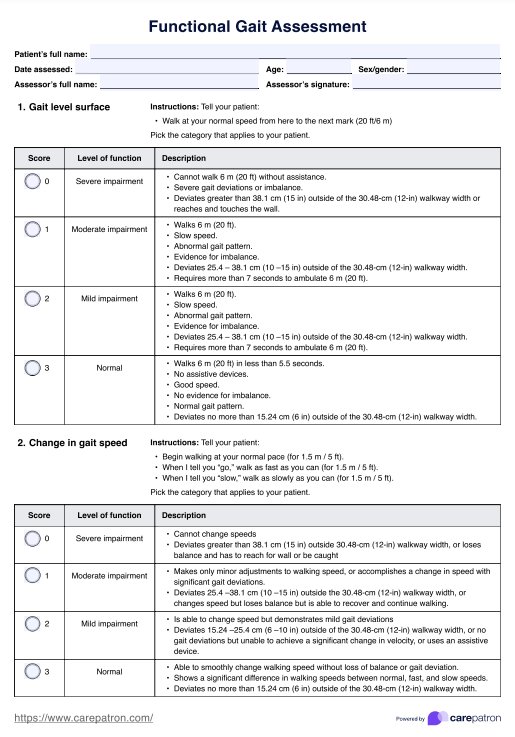The FGA is a standardized tool healthcare professionals use to assess an individual's gait and dynamic balance. It involves specific tasks to evaluate gait deviations and stability during various movements.

Functional Gait Assessment (FGA)
Download our free Functional Gait Assessment (FGA) to assess postural stability and balance in older adults. For instructions and how to score, read further.
Use Template
Functional Gait Assessment (FGA) Template
Commonly asked questions
Trained healthcare professionals, such as physical therapists, typically administer the FGA. Their expertise ensures accurate observation and interpretation of gait performance.
The FGA assesses gait components, including walking at different speeds, turning backward, and negotiating obstacles. It aims to identify gait deviations and instability that may contribute to falls.
EHR and practice management software
Get started for free
*No credit card required
Free
$0/usd
Unlimited clients
Telehealth
1GB of storage
Client portal text
Automated billing and online payments











